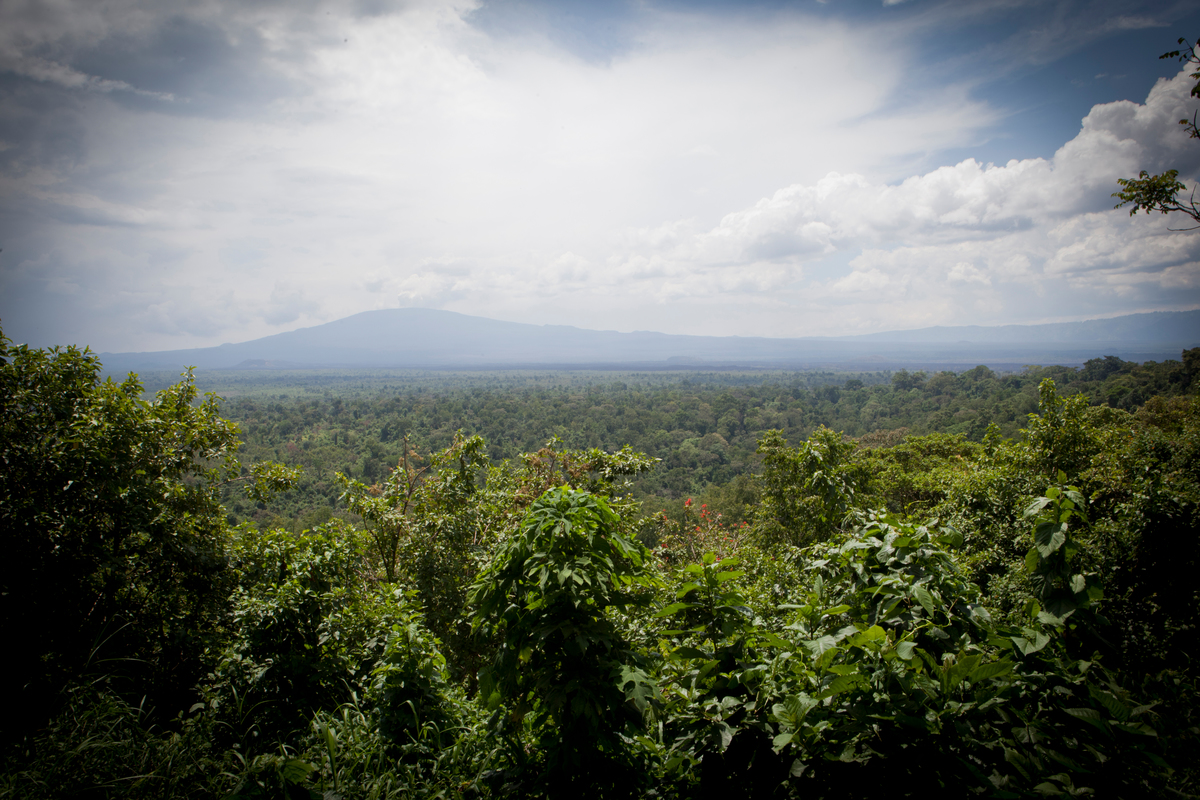
View of the Virunga National Park from the ICCN (Institut Congolais pour la Conservation de la Nature) headquarter in Rumangabo.
The Congo Basin is home to the second largest tropical rain-forested area on earth. New research publicised this week suggests that the rate of deforestation in the region is actually slowing.
However this message does not reflect current science or practice. So a note of caution and some context needs to be applied.
A large body of peer reviewed scientific papers actually show that deforestation is increasing in the Congo Basin. For example, a paper from a team led by a Belgian researcher showed that deforestation doubled in the region between 1990 to 2000 and 2000 to 2005.
Greenpeace’s own mapping team, together with leading scientists and the World Resources Institute, published in Environmental Research Letters this month findings from a model that predicts intact forest landscape degradation will double this decade in the Democratic Republic of Congo.
Intact forest landscapes are unbroken expanses of natural ecosystems that exhibit no remotely detectable signs of human activity or fragmentation and are large enough to maintain all native biodiversity.
The new study indicating deforestation rates are slowing indicates that the scientific methods for determining such trends need a little fine-tuning. It also shows, that to truly understand what is going on, people need to get out into the forests and see for themselves. When traveling in the DRC, for example, one does not have to go far to see forest destruction.
On a journey from Kinshasa recently, Greenpeace witnessed valuable and endangered wengé trees being felled illegally for export to international markets. And as we have repeatedly reported on, large numbers of oil palm plantation projects are threatening to convert large areas of rainforest throughout the Congo Basin.
Whereas general deforestation rates are still slow in the Congo Basin if you compare to regions such as the Amazon and Indonesia, the Congo Basin is the only rainforest basin worldwide where annual change rates are actually found to be increasing. And would still be almost 2,000 square kilometers annually if the new paper is correct, which is totally unsustainable. Furthermore, in the Congo Basin you also have to talk about forest degradation.
The DRC is home to more than half of all intact forest landscapes in the Congo Basin and newly published research shows these areas are increasingly under threat with fragmentation and selective logging as the main cause of degradation.
Protecting these intact forest landscapes is vital to prevent dangerous climate change worldwide because they are huge carbon sinks and are important for the regional and local climate as well. The total carbon stock of the DR Congo is about 27 billion tonnes alone. Both forest degradation and deforestation lead to carbon emissions.
Another cause for alarm is that opening up intact forest landscapes is highly likely to evolve into large-scale forest conversion. Evidence from our recent study shows the rate of forest loss from areas that have been degraded is 12 times higher than that of an intact area. The reality is that degradation also needs to be tackled.
In 2000 when Greenpeace and its partners monitoring research began some 39% of Congo’s primary forests were already fragmented or affected by selective logging.
Within the next 10 years our research models show that we will lose 2.435 million hectares or 4% of intact primary forests in the DRC. This will mainly be through rapid agricultural expansion in the Nord Kivu and Orientale regions and by logging infrastructure expansion within logging permits in Equateur and Orientale provinces.
On the evidence of our own extensive work in the DRC and based on the existing body of scientific evidence, it is by no means time to rest on laurels when it comes to protecting Africa’s forests.
On the contrary it is time to stop illegal logging and forest conversion for large-scale industrial plantations. We must protect the vast majority of intact forest landscapes and promote responsible use by smallholders and communities so they can truly benefit from this precious resource.
Danielle Van Oijen is a Forests Campaigner at Greenpeace International.
